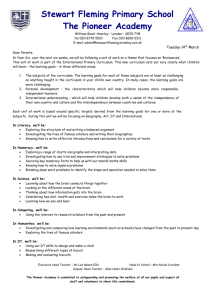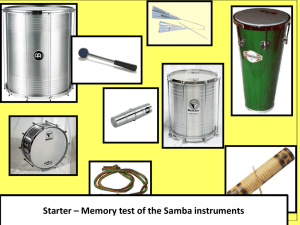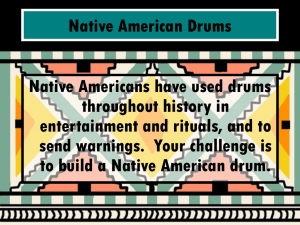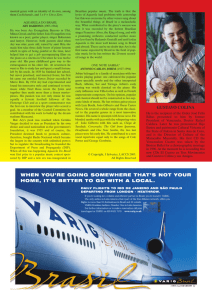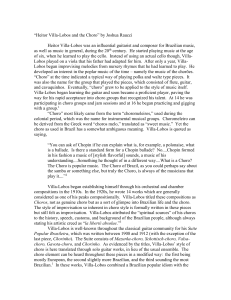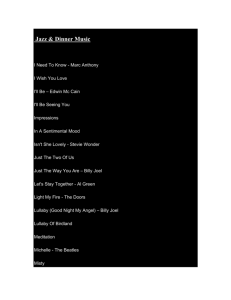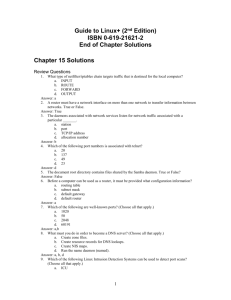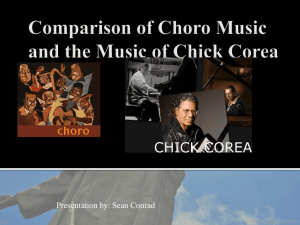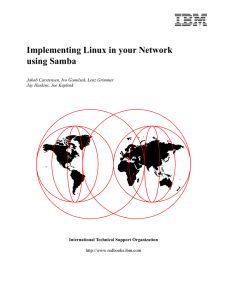African Influences in Brazilian Music
advertisement
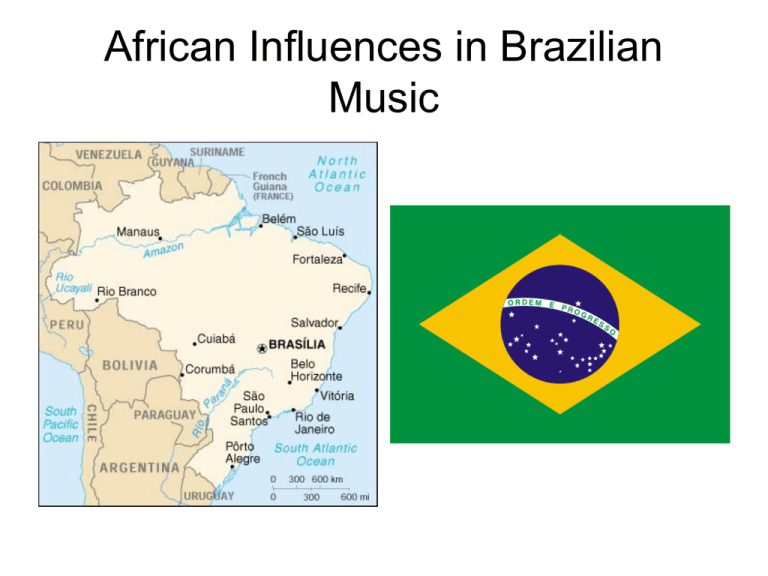
African Influences in Brazilian Music Slave Trade •1538-1850: approx. 3.5 million slaves from Ghana, Nigeria, Angola, Congo, Mozambique (incl.Yoruba, Ewe, Fon). •1850: slave trade abolished •1871: Law of the Free Womb •1888: Slavery abolished General Characteristics of West African/Afro-Brazilian Music • • • • • Dense textures Interlock Rhythmic complexity (polyrhythm) Open-ended forms Structure based on melodic/rhythmic ostinato patterns • Music as means of communal participation Candomblé Aspects of Candomblé • Afro-Brazilian religion • Worship of hierarchy of orixás: deities • Ceremonies: involves dancing, drumming, singing (in Yoruban), to invite orixás to manifest (spirit possession) • Musical characteristics: – – – – – Call and response Polyrhythms Open-ended forms Specific rhythms for each orixá Hierarchy of drums Master Drummer • Candomblé: three drums (atabaque) in hierarchical relationship; directed by master drummer • Is oldest male initiate,lead singer,plays any drum he desires; responsible for facilitating spirit possession • Plays improvised patterns against rhythmic ostinato patterns of other drums • Drums considered sacred: “drum baptism” Capoeira Afro-Brazilian art form combining music, dance and martial arts Capoeira • Instruments: – Berimbau: musical bow with shaker – Pandeiro: similar to tambourine, played with hands – Atabaque drums: similar to conga drums, played with hands – Agógô: double-headed cowbell, struck with stick Roda de Capoeira • Jogar = body play – Ginga = basic movement • Tocar = musical play – Lead berimbau plays “toques” (rhythmic patterns) – Directs course of the “game” • Brincar = verbal play (improvised song lyrics with stock refrains) • Malícia=cunning, trickery (ex. Benção) Samba “Tudo acaba em samba” • Afro-Brazilian urban popular song/dance form • Origins in rural roda de samba: – Participatory – Accompanied by improvised songs and percussion instruments – Style: syncopated, call and response vocals, open-ended forms, musical interlock, diatonic melodies Types of Samba • Carnival samba (e.g. samba batucada and samba enredo) – Characterized by heavy percussion, songs about themes presented in Carnival • (Year-round) samba – Characterized by light percussion and plucked string accompaniment (guitar, cavaquinho) – Songs often satiric, witty, improvised Samba Batucada • Instruments of the Batería: – Surdo drums (basic pulse in 2 divided among three sizes of surdo) – Pandeiro (sixteenthnote division) – Cuíca (accents) – Tamborim (syncopation) – Caíxa (snare drum) Samba Batucada Rhythms Choro • Urban-popular instrumental genre • Late 19th c. in Rio de Janeiro • Predates Carnival samba • Considered “musicians’ music” • Performed for hire at parties • Played for pleasure in the roda de choro • Serves as “Brazilian” musical grounding for instrumentalists of all types Instruments of Choro • Violão (6- and 7string) • Cavaquinho • Pandeiro • Melody instrument (flute, clarinet, bandolim, saxophone) Choro Genre • Instrumental composition in 2/4 • Based on formal structure of polka with standard harmonic progressions • Lively tempos; syncopation • Some improvisation, importance of malícia (playful competition between soloist and accompanist) Choro and Villa-Lobos • Heitor Villa-Lobos (1857-1959) • Choro is “the integral translation of the Brazilian soul in the form of music” Choro Influence • Played guitar in roda at music store • Choro guitar style permeates works – Syncopation – Active bass lines typical of 7-string guitar in choro – Arpeggiated chords – Three sixteenth-note pickup typical of choro

